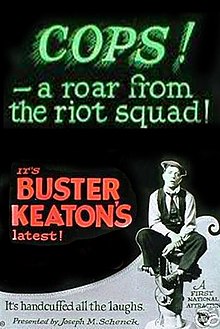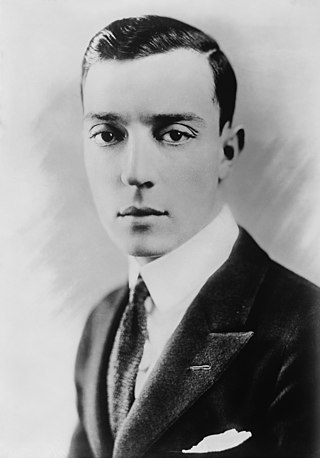
Joseph Frank "Buster" Keaton was an American actor, comedian and film director. He is best known for his silent films during the 1920s, in which he performed physical comedy and stunts with a stoic, deadpan expression that became his trademark and earned him the nickname "The Great Stone Face". Critic Roger Ebert wrote of Keaton's "extraordinary period from 1920 to 1929" when he "worked without interruption" as having made him "the greatest actor-director in the history of the movies". In 1996, Entertainment Weekly recognized Keaton as the seventh-greatest film director. and in 1999 the American Film Institute ranked him as the 21st-greatest male star of classic Hollywood cinema.

The General is a 1926 American silent slapstick Western action comedy film released by United Artists. It was inspired by the Great Locomotive Chase, a true story of an event that occurred during the American Civil War. The story was adapted from the 1889 memoir The Great Locomotive Chase by William Pittenger. The film stars Buster Keaton, who also co-directed it along with Clyde Bruckman.

The Music Box is a Laurel and Hardy short film comedy released in 1932. It was directed by James Parrott, produced by Hal Roach and distributed by Metro-Goldwyn-Mayer. The film, which depicts the pair attempting to move a piano up a long flight of steps, won the first Academy Award for Best Live Action Short (Comedy) in 1932. In 1997, it was selected for preservation in the National Film Registry by the Library of Congress as being "culturally, historically, or aesthetically significant". The film is widely seen as the most iconic Laurel and Hardy short, with the featured stairs becoming a popular tourist attraction.

Sherlock Jr. is a 1924 American silent comedy film directed by and starring Buster Keaton and written by Clyde Bruckman, Jean Havez, and Joseph A. Mitchell. It features Kathryn McGuire, Joe Keaton, and Ward Crane.

Edward Francis Cline was an American screenwriter, actor, writer and director best known for his work with comedians W.C. Fields and Buster Keaton. He was born in Kenosha, Wisconsin and died in Hollywood, California.
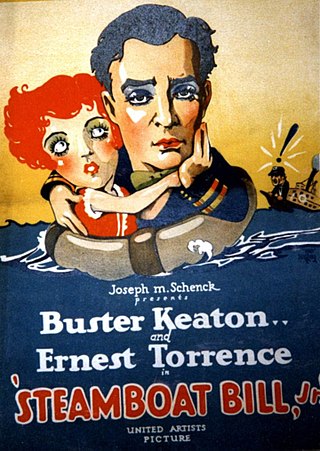
Steamboat Bill, Jr. is a 1928 silent comedy film starring Buster Keaton. Released by United Artists, the film is the final product of Keaton's independent production team and set of gag writers.
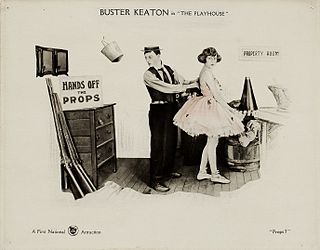
The Playhouse is a 1921 American two-reel silent comic trick film written by, directed by, and starring Buster Keaton. It runs for 22 minutes, and is most famous for an opening sequence where Keaton plays every role.

Educational Pictures, also known as Educational Film Exchanges, Inc. or Educational Films Corporation of America, was an American film production and film distribution company founded in 1916 by Earle Hammons (1882–1962). Educational primarily distributed short subjects; it is best known for its series of comedies starring Buster Keaton (1934–37) and the earliest screen appearances of Shirley Temple (1932–34). The company ceased production in 1938, and finally closed in 1940 when its film library was sold at auction.

One Week is a 1920 American two-reel silent comedy film starring Buster Keaton, the first independent film production he released on his own. The film was written and directed by Keaton and Edward F. Cline, and runs for 19 minutes. Sybil Seely co-stars. The film contains a large number of innovative visual gags largely pertaining to either the house or to ladders.

Convict 13 is a 1920 two-reel silent comedy film starring Buster Keaton. It was written and directed by Keaton and Edward F. Cline.
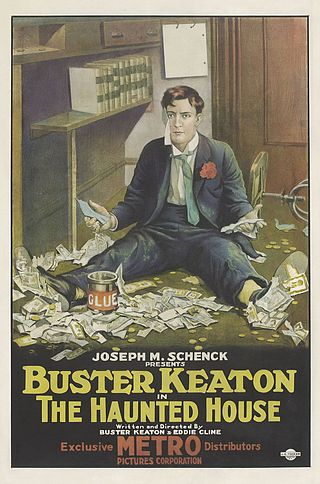
The Haunted House is a 1921 American two-reel silent comedy film starring Buster Keaton. It was written and directed by Keaton and Edward F. Cline. The film has a runtime of 21 minutes.

The Goat is a 1921 American two-reel silent comedy film written, directed by, and starring Buster Keaton.
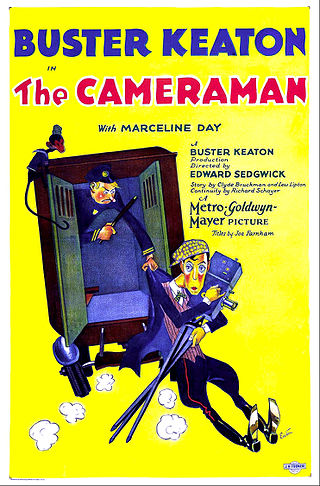
The Cameraman is a 1928 American silent romantic comedy film directed by Edward Sedgwick and an uncredited Buster Keaton. The picture stars Keaton and Marceline Day.

The High Sign is a 1921 two-reel silent comedy film starring Buster Keaton, and written and directed by Keaton and Edward F. Cline. Its runtime is 21 minutes. Although One Week (1920) was Keaton's first independent film short released, The High Sign was the first one made. Disappointed with the result, Keaton shelved it and the film was not released until the following year. The title refers to the secret hand signal used by the film's underworld gang.

The Scarecrow is a 1920 American two-reel silent comedy film starring Buster Keaton, and written and directed by Keaton and Edward F. Cline.
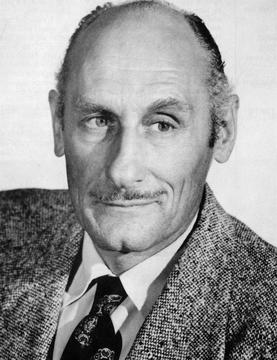
Jules White was an American film director and producer best known for his short-subject comedies starring The Three Stooges.

The Boat is a 1921 American two-reel silent comedy film written and directed by, and starring Buster Keaton. Contemporary reviews consider it one of his best shorts, with One Week (1920), The Playhouse (1921) and Cops (1922). It is presently in the public domain. The International Buster Keaton Society takes its name, The Damfinos, from the name of the film's boat.

The Frozen North is a 1922 American short comedy film directed by and starring Buster Keaton. The film is a parody of early western films, especially those of William S. Hart. The film was written by Keaton and Edward F. Cline. The film runs for around 17 minutes. Sybil Seely and Bonnie Hill co-star in the film.

Day Dreams is a 1922 American short comedy film directed by and featuring Buster Keaton. It is most famous for a scene where Keaton finds himself on the inside of a riverboat paddle wheel. It is a partially lost film and available from public domain sources.

A Cure for Pokeritis is a 1912 short silent film starring John Bunny and Flora Finch. After Bunny's death in 1915, a re-release was announced with the alternative title A Sure Cure for Pokeritis. The film, a domestic comedy, depicts a woman who stops her husband's gambling habit by having her cousin stage a fake police raid on his weekly poker game. It was one of many similar shorts produced by Vitagraph Studios—one-reel comedies starring Bunny and Finch in a domestic setting, known popularly as "Bunnygraphs" or "Bunnyfinches"—whose popularity made Bunny and Finch early film stars. The film has been recognized as an historically important representative of its period and genre.
